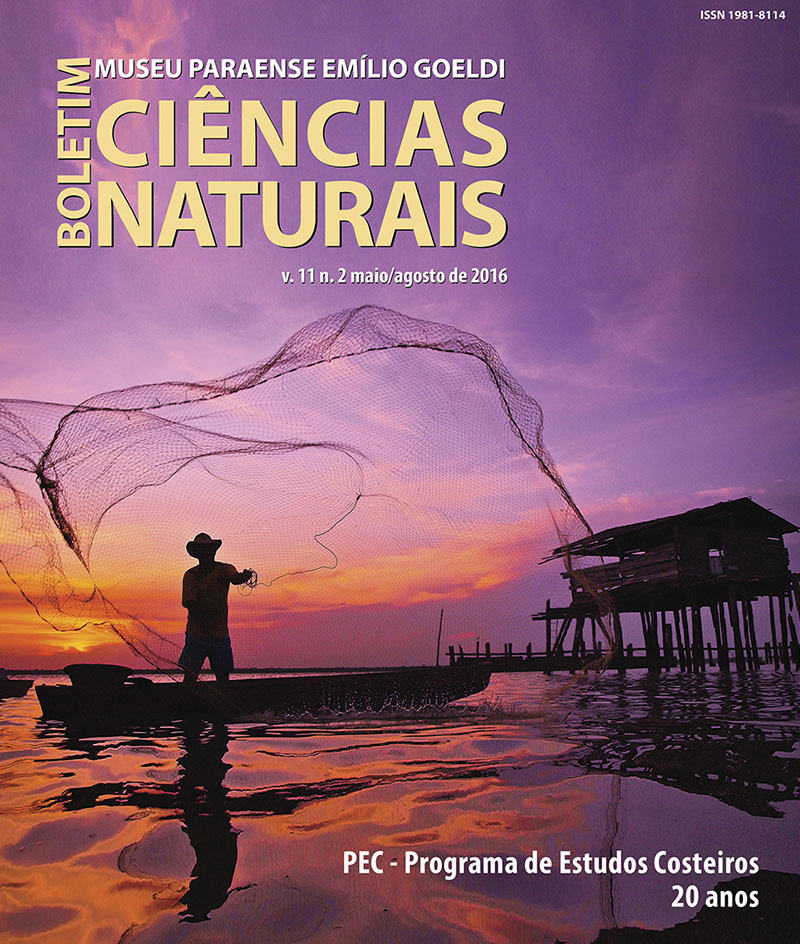Selection of woody species for restoration of degraded areas of costal dune forests in the Amazon
DOI:
https://doi.org/10.46357/bcnaturais.v11i2.425Keywords:
Coastal vegetation, Amazon, Forest restorationAbstract
The aim of this paper is to select potential woody species for restauration of degraded dunes areas on the Amazonian coast, based on their phytosociological data for the species coverage value index (CVI), and classify these species according the funcional groups to which they belong, based on qualitative ecological attributes. 85 species were selected in 35 botanical families, ten of which were considered key structuring species and, therefore, indicated as priorities for costal forest restoration on Amazonian coast. The selected species comprise a group with broad geographical distributions in Brazil, but are heterogeneous in terms of the characteristics that define them in functional ecological groups. They occupy both the lower (Myrcia splendens (Sw.) DC.) and upper strata (Astrocaryum vulgare Mart.), some have off-shoots (Anacardium occidentale L.), and others do not (Copaifera martii Hayne). With regards to successional stage, they can be pioneer (Pagamea guianensis Aubl.), secondary (Tapirira guianensis Aubl.) or climax species (Pouteria ramiflora (Mart.) Radlk.).
Downloads
Published
Issue
Section
License
Publication means fully assigning and transferring all copyrights of the manuscript to the journal. The Liability Statement and
Assignment of Copyrights will be enclosed with the notice of acceptance. All the authors must sign the document and return it to the journal.








